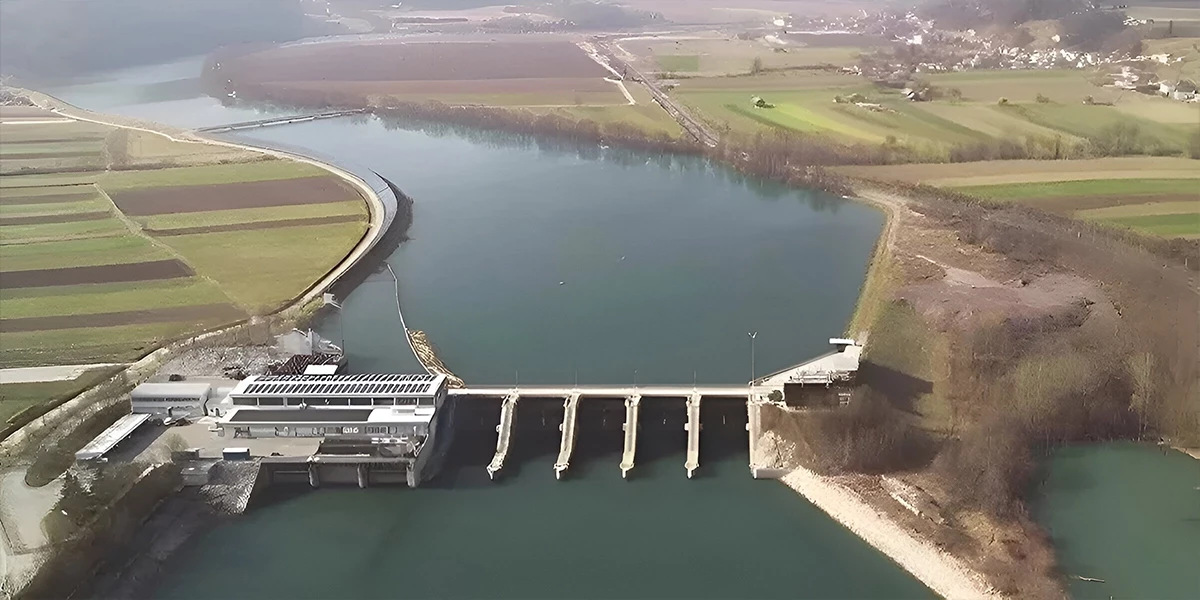

Water is a very strong force of nature, as well as one of the most valuable resources. Its control and management is vital in all irrigation, flood control, hydropower production and waste management. That is where sluice gates are used.
At Yooil Envirotech, we undertake the design of modern, efficient and sustainable water management systems and sluice gate solutions lie at the heart of our engineering philosophy. But what are sluice gates and how do they operate? So, let’s explore what they are made of, how they work, what engineering is behind them.
A sluice gate is a stop or sliding gate that regulates the passage of water in a channel, canal or sluice of a dam. These gates are normally constructed of metal, concrete, or composites and can be lowered or raised to control water levels, and the rate of flow.
Whether it be a sluice canal, a spillway or a sluice in dam the principle is much the same: regulate the flow of water in a controlled and safe manner.
Dams and canals have sluices which serve various purposes:
In Yooil Envirotech, with our designs of sluice gates we attempt to ensure that all these objectives are achieved effectively through long-lasting, corrosion-resistant, and easy to operate systems.
In order to comprehend the mechanism of a sluice gate, it is significant to become acquainted with the major components which constitute a sluice gate:
This is the solid which actually obstructs or permits water flow. It commonly consists of a flat or slightly curved panel of stainless steel, cast iron or reinforced composite material.
These are vertical or horizontal tracks that keep the gate leaf aligned as it moves up and down. They are fixed into the structure (canal walls, dam face, etc.) and provide stability.
Seals ensure minimal water leakage when the gate is closed. Rubber or synthetic polymer seals are used on the edges of the gate leaf to create a tight closure.
This is the most critical part of the sluice gate mechanism. It includes hand wheels, gearboxes, hydraulic cylinders, or electric motors used to lift and lower the gate.
In manual or motor-operated sluice gates, a threaded rod called a spindle connects the actuator to the gate leaf and translates rotational motion into vertical movement.
Let’s simplify the working principle:
Closed Position: When the gate is lowered, it sits snugly within the guide frames and the seals create a watertight barrier. Water cannot pass through.
Raising the Gate: When the actuator is operated (manually or electrically), the spindle or hydraulic system lifts the gate leaf.
Open Position: Once the gate is fully open, water flows through the sluice canal or passageway underneath. The rate of flow depends on how much the gate is opened.
Adjustable Flow: Operators can raise or lower the gate to any height for precise control over water discharge or retention.
This simple yet effective mechanism is the cornerstone of modern water flow control systems.
Over time, various sluice gate designs have evolved to meet different engineering needs. Here are the most common ones used by Yooil Envirotech:
Moves vertically up and down. Ideal for canal headworks and treatment plants.
Curved gates that rotate on a horizontal axis. Common in large dam spillways.
Uses the water pressure itself to open or close automatically—typically one-way valves used in drainage systems.
Heavy-duty gates supported by wheels that roll along tracks—used in high-pressure dam applications.
Operated with a threaded spindle and hand wheel; used in small-scale settings like industrial water treatment.
Understanding the physics behind sluice gates helps appreciate their robust design:
Yooil Envirotech integrates advanced computational modeling and field-tested engineering in every sluice gate we design—ensuring safety, reliability, and performance.
Sluice gates are used in a wide variety of civil and industrial engineering projects:
At Yooil Envirotech, our sluice gates are custom-built for each project based on site conditions, operational goals, and sustainability metrics.
With decades of experience in global water infrastructure, Yooil Envirotech delivers cutting-edge solutions tailored for performance, longevity, and environmental compatibility. From automated sluice gates powered by smart controls to heavy-duty dam installations, our engineering team provides full support, from design to maintenance.
Whether you are building a sluice in a dam, designing a sluice canal, or upgrading an industrial water control system, our sluice gate solutions are built to last and engineered to perform.
A sluice gate may seem like a simple device, but it plays a critical role in modern water management. Their thoughtful engineering ensures that water can be controlled safely, efficiently, and sustainably, be it in dams, canals, treatment plants, or urban drainage systems.
At Yooil Envirotech, we’re proud to lead the way in developing sluice gate systems that stand the test of time and nature. Let us help you harness the power of water responsibly and innovatively.
